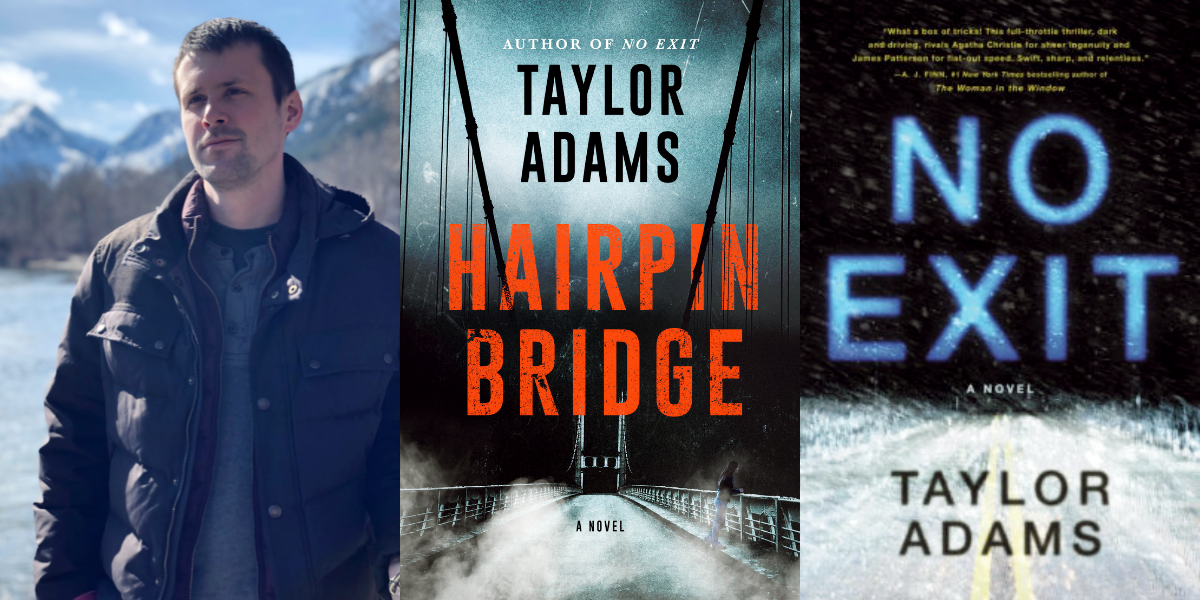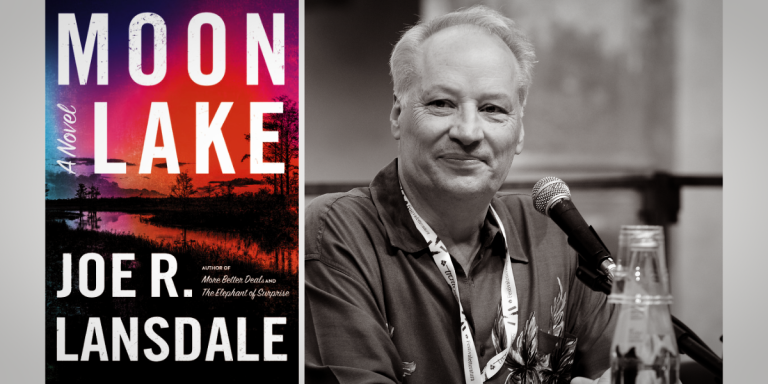Taylor Adams on Hunting Down a Killer

In my new thriller HAIRPIN BRIDGE, heroine Lena Nguyen is hellbent on bringing her twin sister’s killer to justice. There’s no exact formula on how to build an engaging protagonist (and, as they say, rules are made to be broken), but there are certain storytelling guidelines that I’ve found to be essential in my thrillers. You can say these are rules that I’ve never been brave (or foolish) enough to break.
One of the most important traits for a protagonist? He or she must be active. A protagonist should want something, or better yet, need something, and be actively working to achieve that goal. Conflict is what powers any story, and passive protagonists often fail to deliver that. We often demand our heroes to be dynamic, because if they’re not trying their hardest, why should we care? And often, the tougher the goal, the more naturally inclined we feel to root for them. In HAIRPIN BRIDGE, Lena has lost faith in the police ruling of suicide and investigates her sister’s death herself by personally confronting the man she believes responsible on that titular bridge—and most critically, he’s a police officer. She understands the danger she’ll face there and has planned carefully for every outcome.
A protagonist must also be challenged to overcome their flaws, and exposing those flaws is where the antagonist comes in. It’s common writing knowledge that a proper villain should be fearsome and unstoppable, and that is certainly true to an extent, but I believe the power struggle in a good thriller is more nuanced than some may think. If the villain appears too perfectly formidable and beats the hero repeatedly, that can become disengaging. After all, there’s little excitement in waging a hopeless battle. There should always, always be gaps in the villain’s armor, however slight; just a tease of hope to pull us in. If we think the hero still has a fighting chance to somehow pierce that armor, we’ll root for them even harder. Think of it like sports. Is there anything exciting about a wipeout? In a thriller, you want a close game. You want to make the reader feel as if things really could go either way, which makes every moment feel potentially exhilarating or disastrous. That simple ingredient—the protagonist’s power to win, even as the underdog – can do wonders for reader engagement.
In addition to a clear goal, and the power to interfere with the villain’s plans, a protagonist must have something real at stake. This isn’t as simple as life and death (although that’s a great starting point). A story’s latter acts are all about escalation, and you need something powerful to escalate to or the narrative is guaranteed to run out of steam. What does your protagonist truly fear to lose? What happens if they fail? In HAIRPIN BRIDGE, Lena understands her mission will put her life at risk, but what truly frightens her is the dark matter that fuels the story. She’s afraid of never solving her sister’s murder. She’s afraid of letting a killer walk free. And, most of all, she’s terrified of the truth: what if her sister’s death wasn’t even a murder at all? Lena’s emotional stakes become excruciating for her as she closes in on the truth – and the story’s finale challenges her more than any gunfight.
Those are three of the most important guidelines I follow while writing a protagonist. But there is no mold, and no recipe. It all depends on the needs of the story. And, also worth noting is a trait I’ve deliberately excluded from this list, which may be surprising: likeability. Hear me out: a protagonist being likeable to the reader—while often very helpful—is not strictly necessary. Even incredibly flawed people can be terrific protagonists. What matters is that they be interesting, and to me, an interesting character hits those same three core points: they’re active, they’re powerful, and they have something meaningful at stake.
Discover the Book
Three months ago, Lena Nguyen’s estranged twin sister, Cambry, drove to a remote bridge sixty miles outside of Missoula, Montana, and jumped two hundred feet to her death. At least, that is the official police version.
But Lena isn’t buying it.
Now she’s come to that very bridge, driving her dead twin’s car and armed with a cassette recorder, determined to find out what really happened by interviewing the highway patrolman who allegedly discovered her sister’s body.
Corporal Raymond Raycevic has agreed to meet Lena at the scene. He is sympathetic, forthright, and professional. But his story doesn’t seem to add up. For one thing, he stopped Cambry for speeding a full hour before she supposedly leapt to her death. Then there are the sixteen attempted 911 calls from her cell phone, made in what was unfortunately a dead zone.
But perhaps most troubling of all, the state trooper is referred to by name in Cambry’s final enigmatic text to her sister: Please Forgive Me. I couldn’t live with it. Hopefully you can, Officer Raycevic.
Lena will do anything to uncover the truth. But as her twin’s final hours come into focus, Lena’s search turns into a harrowing, tooth-and-nail fight for her own survival—one that will test everything she thought she knew about her sister and herself...
By clicking 'Sign Up,' I acknowledge that I have read and agree to Hachette Book Group’s Privacy Policy and Terms of Use


